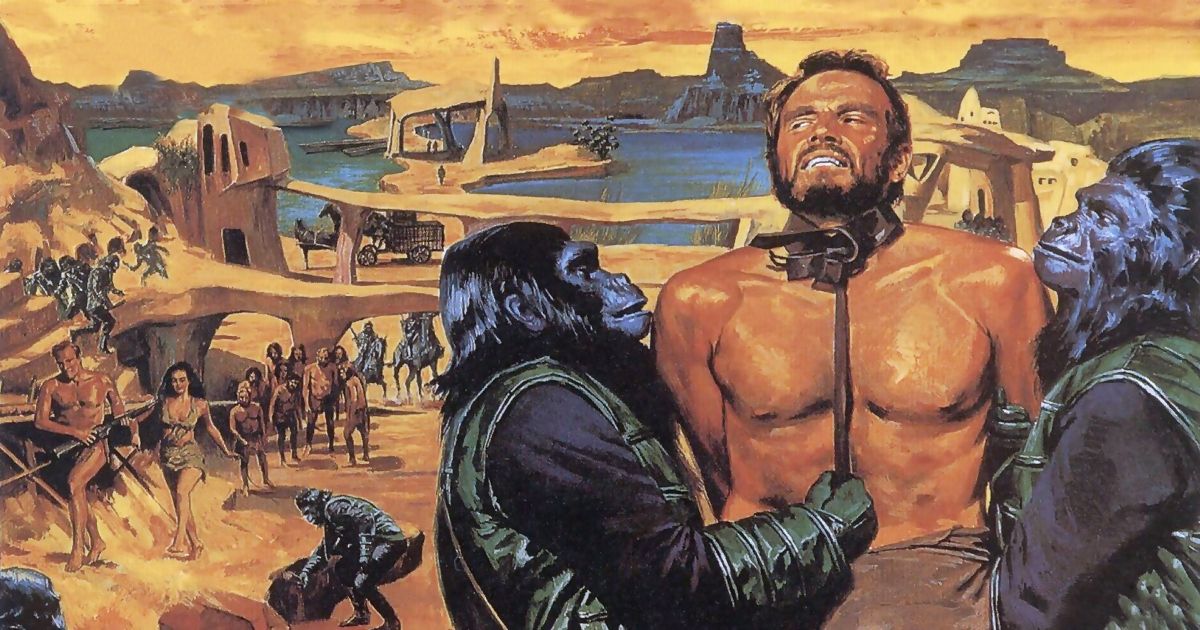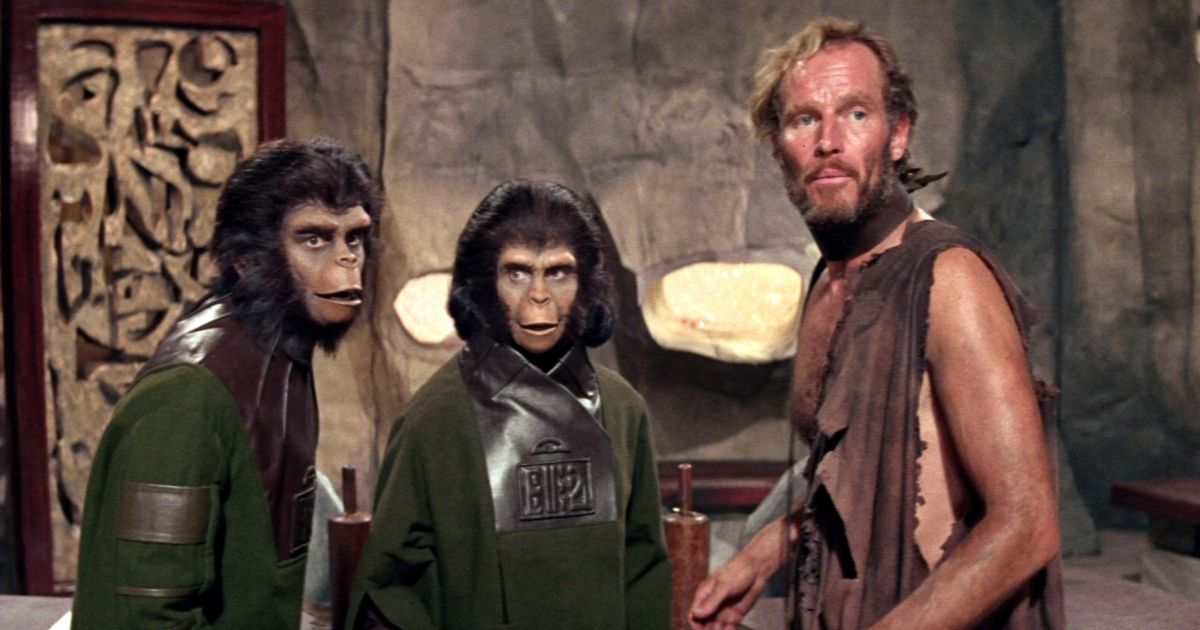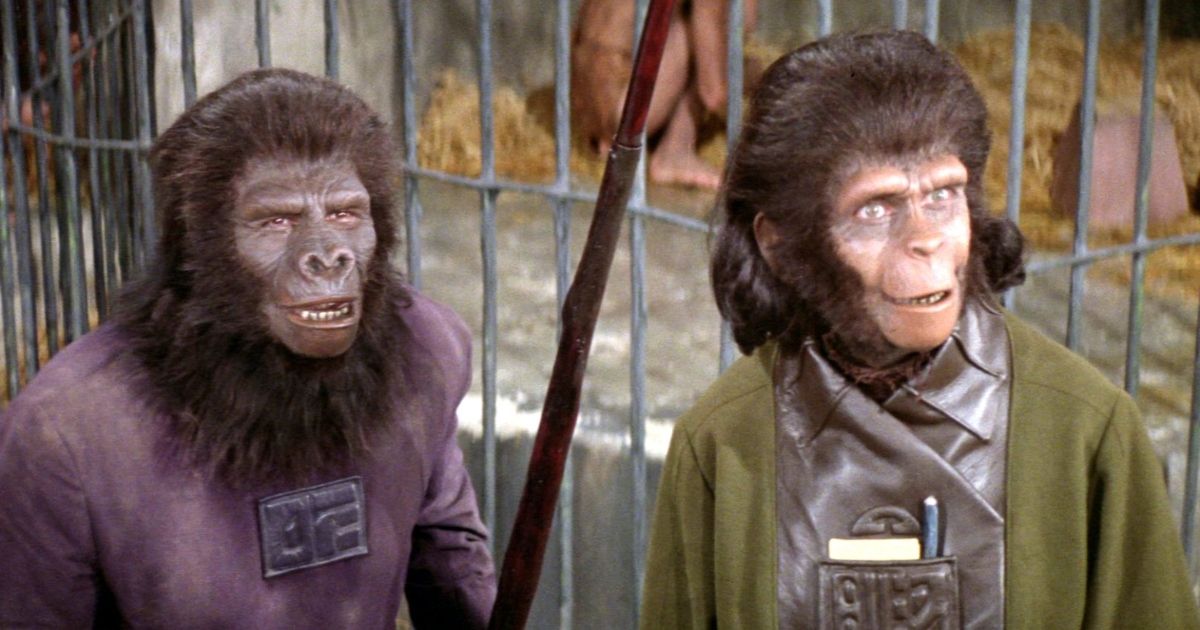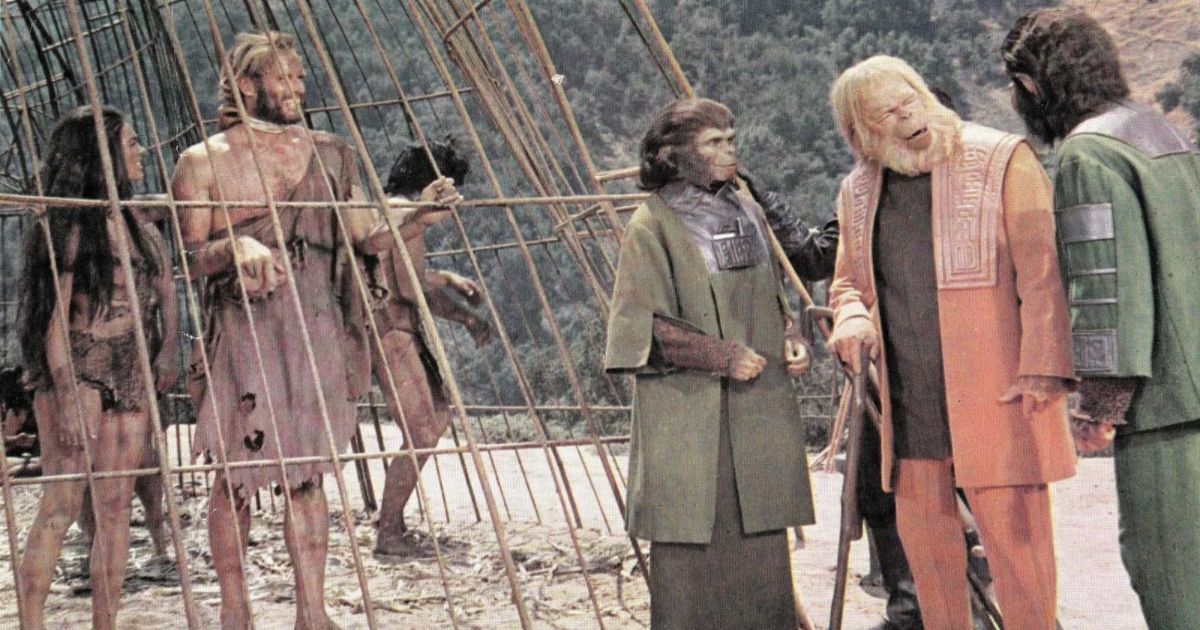Science fiction has solidly proven itself to be one of the most long-standing and popular genres of film. From the genre’s cinematic inception during the 1920s, to its explosion in popularity in the 1950s and eventually its current mixture of major franchises and arthouse indie flicks, science-fiction filmmaking has established its place in history as one of the most experimental and frequently odd genres of film. Many of cinema’s most iconic and groundbreaking films have emerged from the genre. One such film is 1968’s Planet of the Apes.
Planet of the Apes was directed by Franklin J. Schaffner and written by Michael Wilson and Rod Serling, and it was adapted from the 1963 novel by French author Pierre Boulle. The film was a major hit in the late ‘60s and it has spawned one of Hollywood’s most acclaimed and expansive franchises. There have been eight more films released under the name in the 50 years since its release, with a ninth currently in the works. In addition to two television series, there has also been a slew of video games and comic books that have delved even further into the franchise’s world and mythos.
With over half a century of age and that immense franchise expansion under its belt, the first Planet of the Apes film has taken on a bit of legendary status. Revisiting it today, through a modern perspective and context, the film still (mostly) holds up. Here’s how:
Context of the Newer Films
With how big a franchise Planet of the Apes has become, it’s hard not to consider the first film within the context of the series it has spawned. However, the first Planet of the Apes movie was never actually intended to lead to any sequels. It was produced as a one-off film adaptation of the book, with no real thought given to what a sequel would even look like. However, after the film’s massive success, there were four sequels released in the span of only a few years. There was one reboot misfire in the early 2000s, but then the series was born again with the trilogy of Rise, Dawn, and War for the Planet of the Apes in the 2010s.
While the worlds of 1968’s Planet of the Apes and the newer Apes trilogy from Matt Reeves don’t completely align (and they are even further apart if you consider the direct sequels to the '68 film), they are close enough that the original film can be watched with just a smidge of head-canon retconning to make the new trilogy coherently exist as direct prequels. There’s a small portion of 2011’s Rise of the Planet of the Apes that establishes a ship leaving the Earth and getting lost in space, which could theoretically be the ship of George Taylor and the other astronauts of the ’68 film. Moving into Dawn and War, the new trilogy also thoroughly establishes what actually happened to humanity on Earth as the apes began to take over. With much of the human race being wiped out by the Simian Flu in Dawn, and the rest being rendered mute and unintelligent by a mutation of the same virus in War, the end of the new trilogy solidly establishes a world not too dissimilar from that of the original film.
All of this is to say that the new Planet of the Apes trilogy serves as a solid contributor to the overall Apes mythos and builds upon and develops much of what was established in the original film. For anyone that may have only seen the new films, while the ’68 movie is by no means a direct continuation, it does follow the events of the modern trilogy convincingly enough to tie them together.
Practical Effects and Makeup
While it is fun to consider the original Planet of the Apes within the context of the franchise it has spawned, the film also stands incredibly well on its own. One of the most memorable and universally praised aspects of Planet of the Apes is the practical effects and makeup of the film. The movie was nominated for best costume design at the 41st Academy Awards, but at the time there was no category for makeup in which it could have been nominated. However, that didn’t stop Planet of the Apes from winning the award anyway, as the film’s makeup artist, John Chambers, was presented with an Honorary Oscar for his makeup work on the film during the ceremony.
Saying Planet of the Apes had some of the best makeup in cinema history is almost a cliché at this point, but that doesn’t make it any less true. The makeup work in the film is nothing short of absolutely outstanding. The new trilogy of films is lauded for creating photo-real apes with digital effects, but the original ’68 movie was able to do basically the same thing by using incredibly detailed and advanced prosthetics. The apes in the film look like real apes that have evolved into a higher form of intelligence. There are very few instances in which it is apparent that it is simply just actors in makeup.
To be frank, the makeup work in Planet of the Apes even surpasses a lot of the work that is done today, both practically and digitally. It’s an effect that holds up and still sells the audience on the film. If these effects had not worked on camera, then it is likely that the Planet of the Apes franchise would not have exploded in popularity the way that it did. It’s a cinematic feat that would be amazing to see in a film released today, which makes the fact that it came out over 50 years ago all the more awe-inspiring.
Political and Social Commentary
The political and social commentary of Planet of the Apes is front and center throughout much of the film. The film’s story, set in a world where apes are the dominant species and humanity is viewed as unintelligent beasts, was radical for a Hollywood movie in the late ‘60s, especially when compared to the more rugged westerns that were popular at the time. The film still maintains much of its poignant and damning commentary when viewed through a modern lens. Before its release, the filmmaking team behind the movie feared the audience would reject it entirely, which some people certainly did. The commentary of the film is multi-layered and woven throughout its entire plot. As it has aged, the political and social implications made by Planet of the Apes have become some of the most debated in blockbuster cinema.
One of the most frequently discussed aspects of the film is how it depicts and comments on the issue of racial discrimination. The film is often read through a racial lens, with the central concept being a world where white people are the minority and are treated with the same discriminatory and racist hatred that has been and is still directed toward Black people and other minority groups in our real world. It presents its story with a sort-of “Walk in another person’s shoes” or “How would you like it?” attitude. When watching the film from this perspective, however, the commentary of Planet of the Apes does not age very well. While its intentions are certainly in the right place, as its goal is to put a spotlight on the injustice of racially-based profiling, murder and abuse, the execution of the idea comes a little too close to the modern ‘great replacement’ conspiracy theory and other white supremacist nonsense. It makes white people the victims in the situation, with the aggressors being those that have replaced them. It’s not a great look. Plus, there’s the added detractor that the depiction of BIPOC communities in this scenario is literally a civilization of apes, which only takes matters from bad to worse.
With that said, reading the film through a more scientific and societal lens offers up commentary that has aged much better. One of the more obvious commentaries the film makes is through its depiction of and conversation about religion and evolution. On multiple occasions, characters in the film present the idea that the apes might have evolved from a previous human civilization that has long been extinct. While some of the lead scientists in the movie back this idea, it is ultimately rejected by the established political and religious leaders of the ape civilization. They refuse to believe the idea because the concept would contradict the sacred governmental and religious texts that their society is built around. There are numerous political and social issues in our world that undergo a similar treatment, with the concept of evolution continuing to be one of them nearly 50 years after the film’s release. While the idea is much more widely accepted now than it was in the ‘60s, it is still not universal, making Planet of the Apes’ commentary on the issue maintain its relevance and potency.




